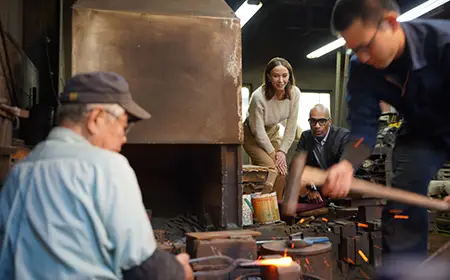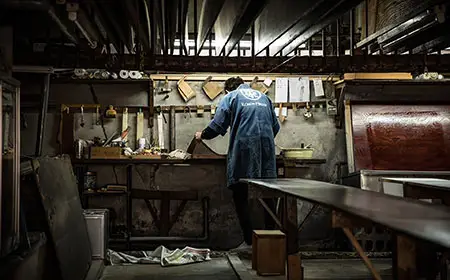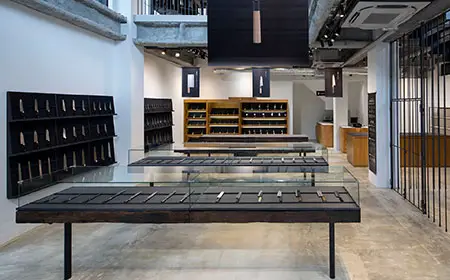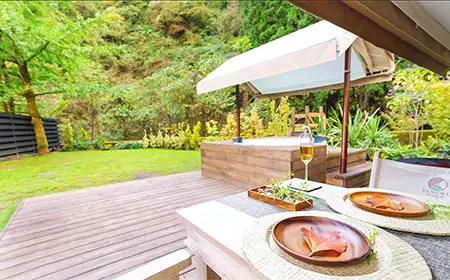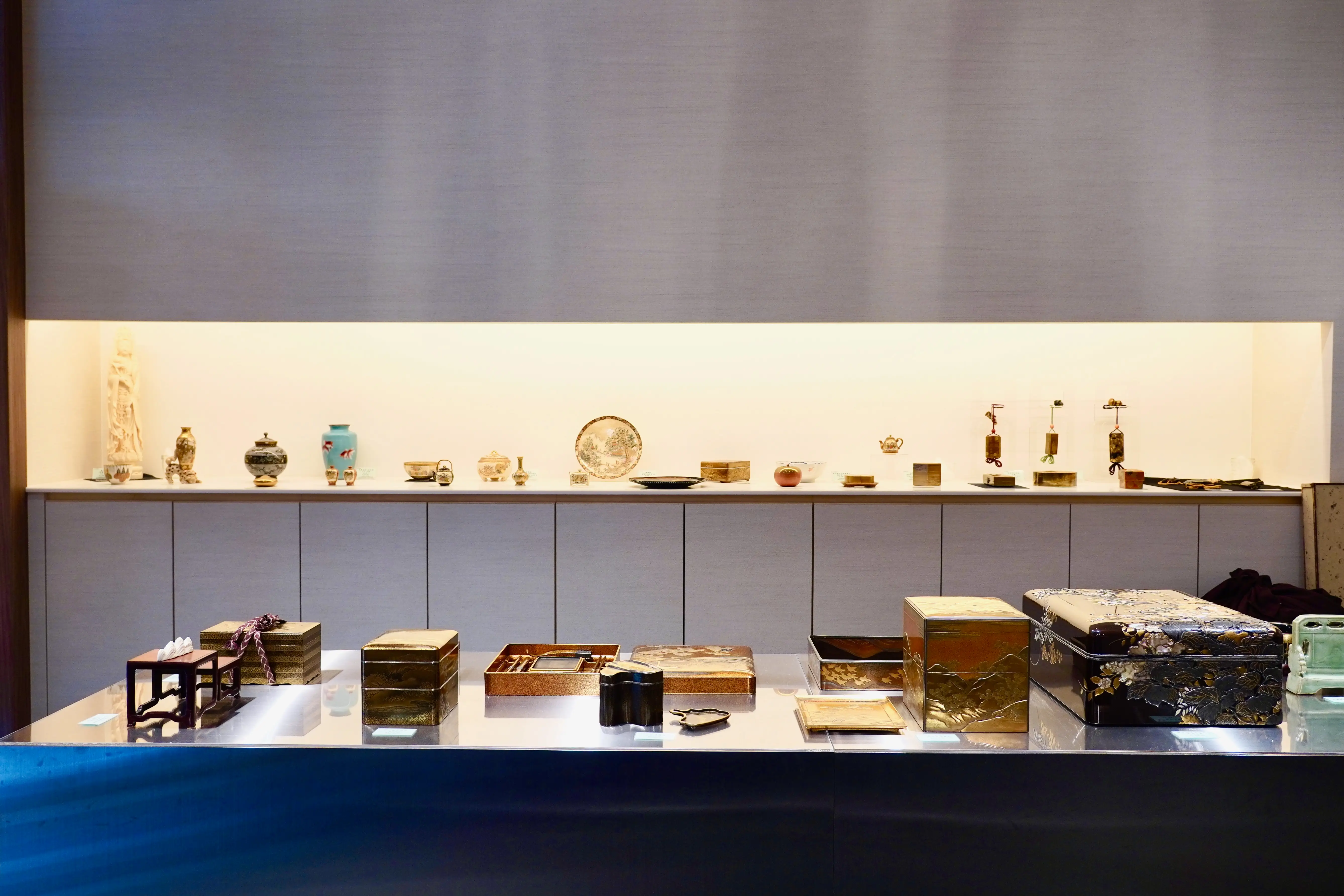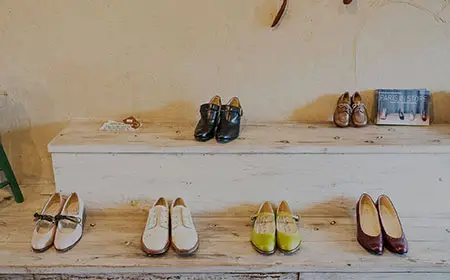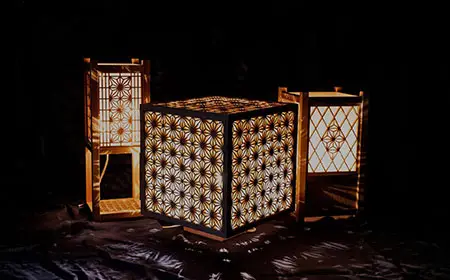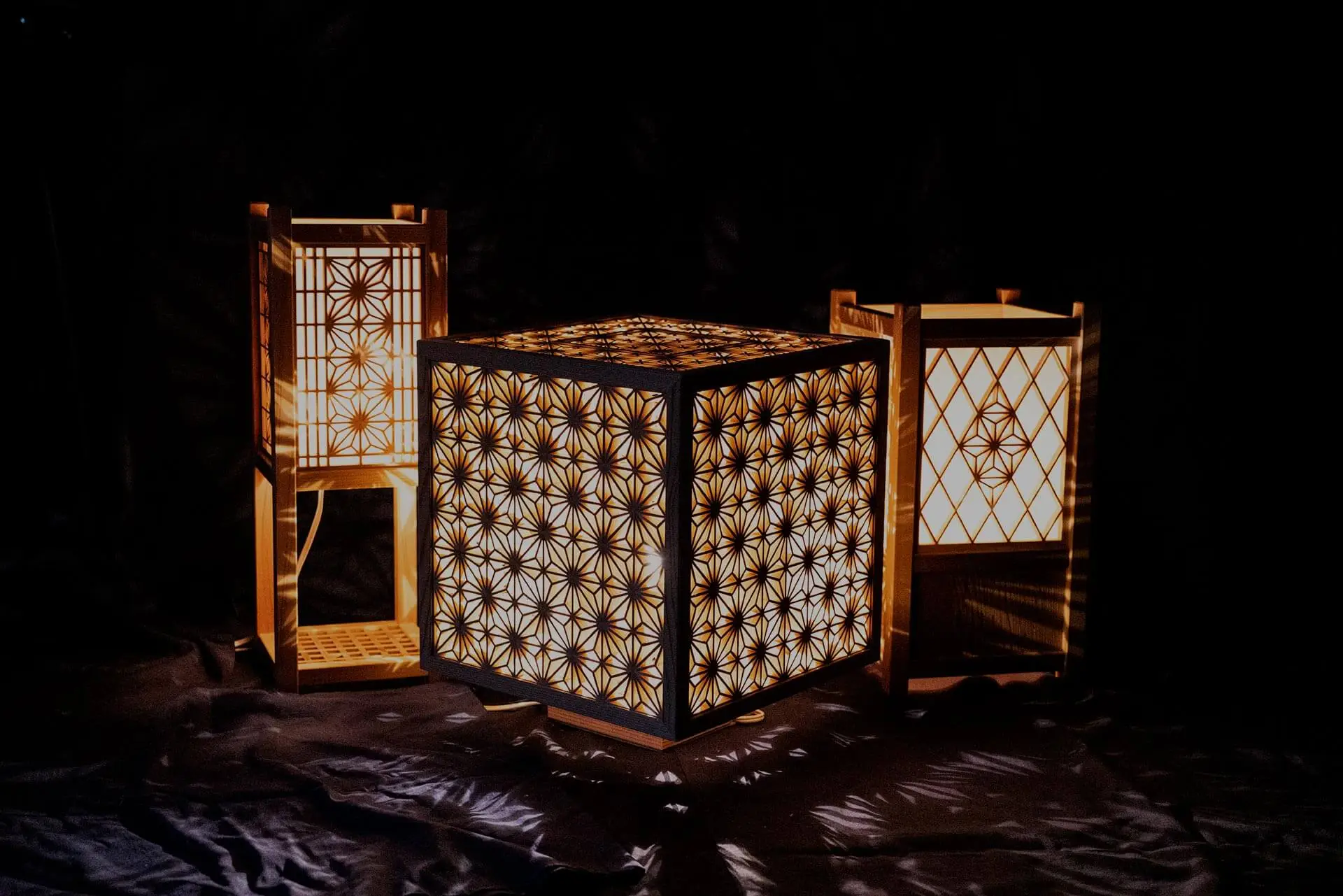
EDO KUMIKO: AN INTRICATE AFFAIR
Visit this small Edo workshop, specializing in delicate wooden latticework, and bring back a piece of Japanese carpentry history in the form of a beautiful andon lantern, a speciality of Takahiro Tanaka who continues this proud Tokyo tradition.
If you have ever marveled at the fine latticework found in most traditional Japanese houses, temples and shrines, a visit to the small workshop of Edo Kumiko – Tatematsu is sure to further your appreciation of this delicate Japanese craft. The art of kumiko, as it is known in Japanese, produces intricate works of latticed wood, often with inspiration from nature such as flowers and snowflakes in the design, that are used for byobu folding screens, shoji sliding doors, windows, and other decorative purposes.
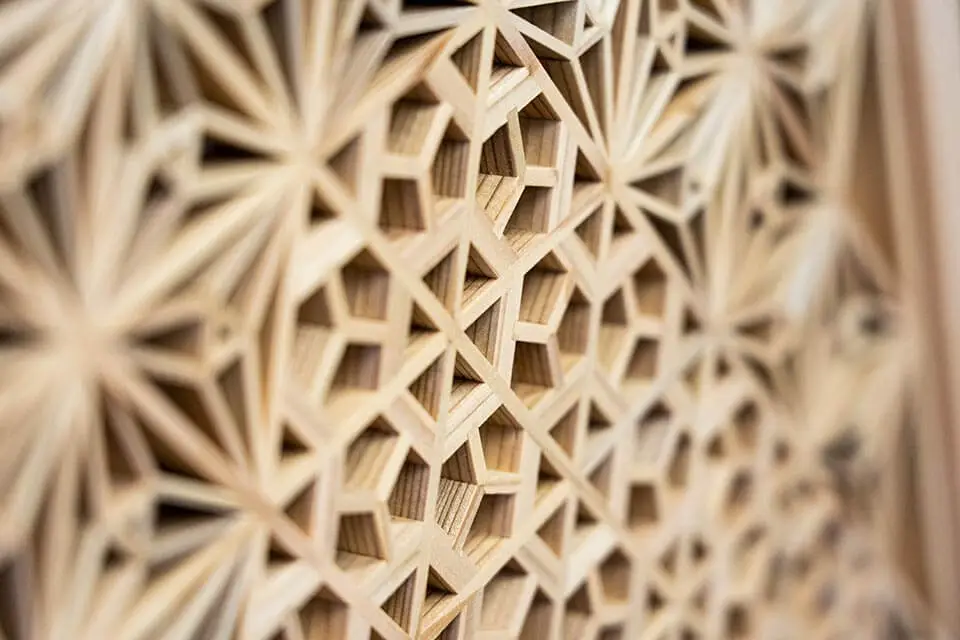
Takahiro Tanaka is continuing his father's business at Edo Kumiko – Tatematsu in Edogawa ward in the east of Tokyo. His creations are so popular that there is usually at least a six-month wait from order to delivery. He insists on making the myriad of three-to-four-millimeter thin pieces of Kiso-hinoki cypress or Akita-sugi cedar used in his creations by hand. In keeping with the tradition of the craft, no nails or screws are ever used. His only tools are a fine-toothed saw, a small chisel, a razor-sharp plane, and various handmade jigs.
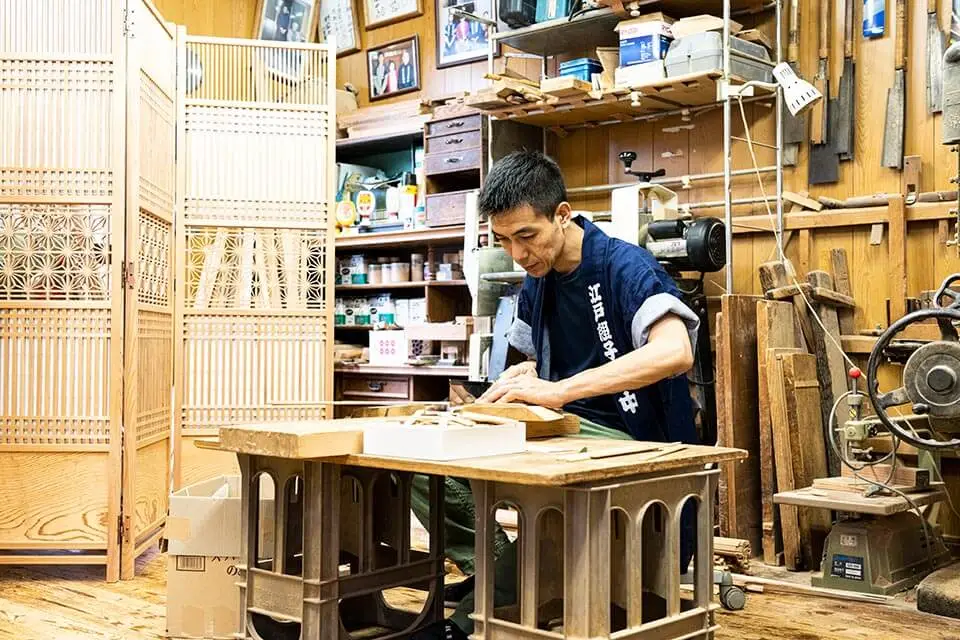
Hundreds or sometimes even thousands of small parts go into the making of one finished product. Selecting and mixing from more than 200 traditional patterns, Tanaka decides the design of each sliding screen or andon lamp in close consultation with the customer. He never uses any construction drawings, but rather keeps a mental image of the finished product in his mind as he slowly builds up the work, starting from broad outlines and then adding more and more details.
As each product is completely handmade, Tanaka is happy to accommodate individual wishes, another reason why his unique creations are so popular among his discerning clientele. Fly-fishing enthusiasts come to him for beautifully crafted wooden bait or catch boxes, practical works of art that are sure to enhance a leisurely day at a favorite creek. People seeking one-of-kind gifts or souvenirs of a proud Japanese craft tradition purchase his gorgeous andon lights, available in many different sizes and designs. The largest are made up of as many as 2,500 individual pieces of wood.
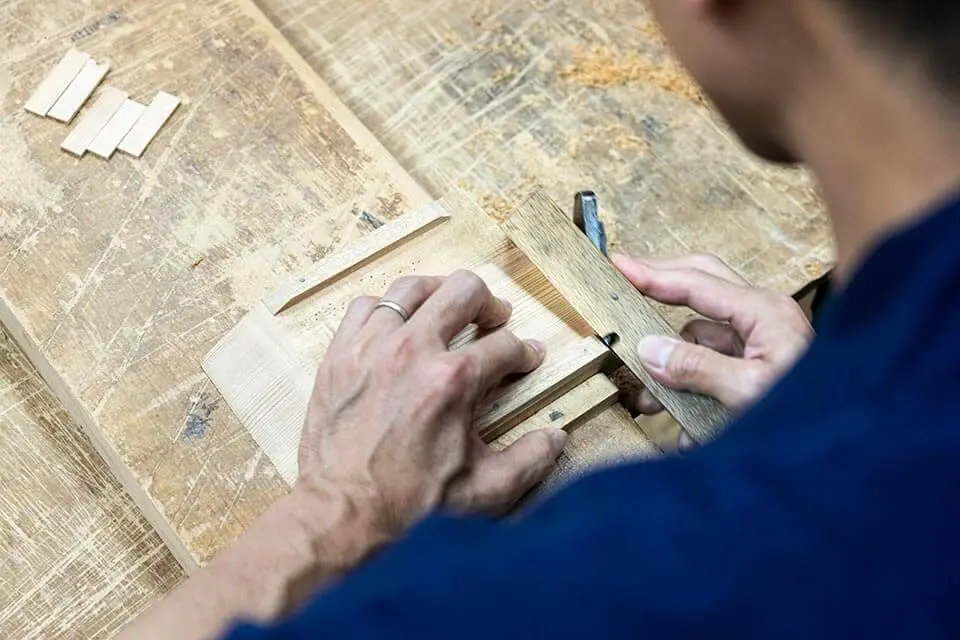
Tanaka also makes furniture, including tables, cabinets with kumiko doors, or even television sideboards. The waiting times for these larger items would likely involve shipping upon completion. Smaller items such as coasters, small screens with inserted clocks, or flower vases are typically in stock and can be brought home directly.
While Tanaka does not speak any English, he is more than happy to welcome visitors to his small workshop. Seeing the kumiko craft process up-close and personal is fascinating and heightens your appreciation of the art. Tanaka also exhibits and does demonstrations in department stores in Tokyo and around Japan. Visit his website (Japanese only) for the dates and locations of upcoming events.







